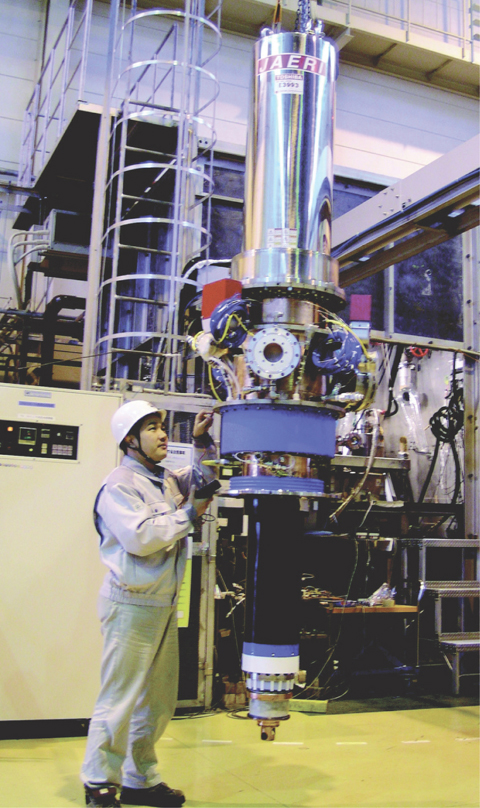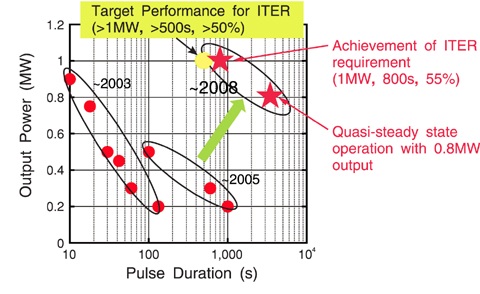
Fig.3-10 The plasma heating device "gyrotron" for ITER

Fig.3-11 The progress of ITER gyrotron development at JAEA
A gyrotron is an electron tube which can transduce electron beam energy into electromagnetic wave energy in the range of several GHz ~ THz. It will be used as a plasma heating device in the International Thermonuclear Experimental Reactor (ITER) (Fig.3-10). The high temperature plasma needs to be one hundred million degrees Celsius for the fusion reaction, which can be realized by the injection of RF beams like a microwave oven.
The ITER gyrotron is required to have 170 GHz frequency (70 times as high as that of microwave oven), 1MW output (2000 times as high as that of microwave oven), 50% efficiency (ratio of DC input power to RF power) and 500s pulse duration, which is a typical pulse time of ITER. We started the development of the high power gyrotron for ITER about 15 years ago and have developed advanced technologies of energy recovery, high power oscillation, and synthetic diamond windows ahead of other countries. Furthermore, we combined the technologies of steady state oscillation (to control the beam current) and of changing the rotational frequency of the electron beam and the rotation ratio (the ratio of the rotation speed to the travel speed) during the oscillation, which is a source of RF energy. The gyrotron succeeded in stably-shifting the operating region to the hard-self-excitation region, which achieved higher efficiency than the normal operating region. As a result, the oscillation efficiency of 55% was attained with 1MW power and the pulse duration greatly exceeded the performance required for the ITER gyrotron. Furthermore, quasi-steady state oscillation of 1 hour, which is necessary for the steady state operation phase planned for ITER, was achieved with 0.8MW output power and 57% efficiency (Fig.3-11). These results show that for, the first time in the world, the requirements of the ITER gyrotron have been met. The achievement is a great step forward for the ITER project. The physics mechanism by which high efficiency oscillation in the hard-self-excitation region can occur was clarified experimentally at the same time. This progress will stabilize and heighten gyrotron performance, and it will greatly contribute to the improvement of the plasma heating system in ITER. Application of gyrotrons to other fields, public and private, is also expected.
This study was awarded the Technological Prize (Research Section) in 2008 by the Minister of Education, Culture, Sports, Science and Technology.